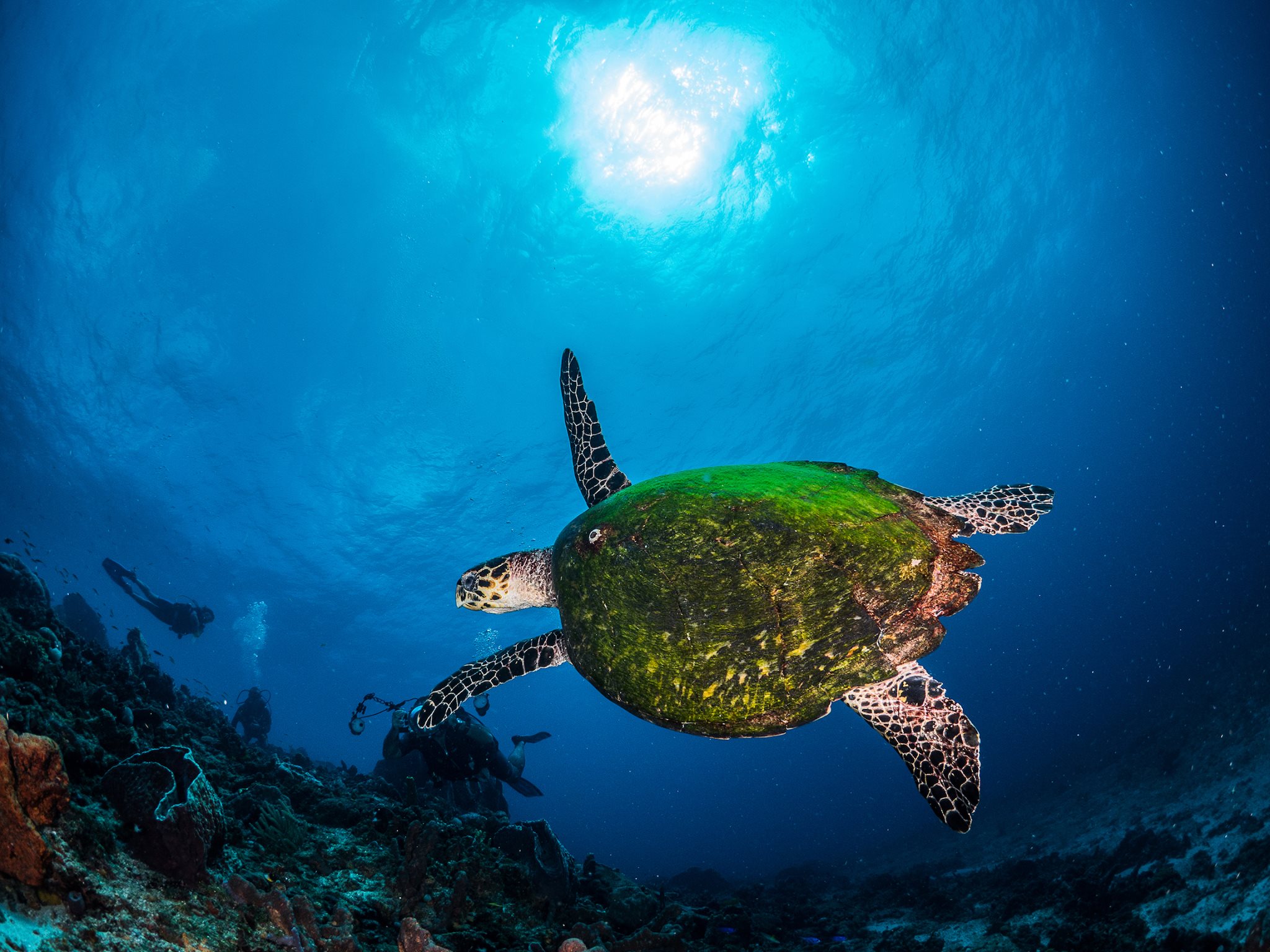Just 7 miles from the coast of Venezuela, Trinidad and Tobago has been a popular Caribbean destination for centuries. In particular, Tobago, the smaller of the two islands, is of interest to scuba divers and lovers of all water sports. Sitting at the intersection of the Caribbean Sea, the Atlantic Ocean and Venezuela’s Orinoco River, it’s little wonder this tiny island is rich in marine life and fascinating dive sites.
In addition to more than 40 dive sites, Tobago boasts several beaches ranked in the top 100 beaches worldwide byCNN. It’s also home to lush rainforests and verdant interiors, making it an ideal home to unique bird species. In addition, the island’s native and colonial history have resulted in a brilliant mix of language and culture. Tobago is even home to one of the world’s largest Carnival celebrations.
Under the water, most dive sites are sloping, fringing reefs with light current. More advanced sites can also be found around the island with depths of up to 100 feet (30 meters) and raging currents. Marine life varies from small octopus and reef fish to huge manta rays and bull sharks. This is an incredibly diverse island both above and below the surface.
8 Interesting Facts for Traveling to Trinidad and Tobago
- Trinidad and Tobago have the third largest GDP per capita in the Americas, following the USA and Canada. Unlike most other Caribbean nations which rely on shipping and tourism, Trinidad and Tobago have a large industrial sector focusing on petroleum and petrochemicals.
- Because of its long history, these islands are home to several musical and cultural traditions that have spread throughout the Caribbean. Calypso music, the steelpan instrument and even the limbo all find their roots here.
- You might recognize Tobago’s Bacolet Bay Beach. It was the filming location for the 1960 Swiss Family Robinson movie. The beach was also a favorite vacation spot for the Beatles from the late 1960s until the early 1970s.
- Although a popular vacation spot today, Bloody Bay on Tobago’s leeward coast was named for a naval battle that reportedly turned the island’s blue waters bright red. Others claim the name stems from red earth deposits found around the beach.
 The world’s largest brain coral can be found off the coast of Tobago at a dive site called Kelleston Drain. The colony measures about 10 feet (3 meters) high and 16 feet (5 meters) wide.
The world’s largest brain coral can be found off the coast of Tobago at a dive site called Kelleston Drain. The colony measures about 10 feet (3 meters) high and 16 feet (5 meters) wide.
- Tour operators claim that it’s possible to stand “in the middle of the ocean” off Tobago. It’s not quite the middle of the ocean, but an underwater sandbar off Pigeon Point has become a major tourist attraction thanks to its shallow waters. The average person can stand in waist to chest-deep water at what is now known as the Nylon Pool.
- Tobago got its unique name from the tobacco pipe used by locals called a “tovago.” Some people even claim the island looks like the pipe itself.
- Trinidad and Tobago is one of the best Caribbean destinations for spotting leatherback sea turtles. Every year, the country hosts thousands of leatherback sea turtles who arrive to nest on the islands’ shores. If you arrive at the right time of year, you might even see the hatchlings scurry from their nests to the sea.







